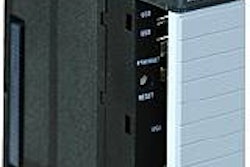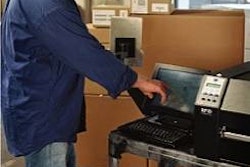
West Pharmaceutical Services extends its Flip-Off[r] tamper-evident seal technology with West Spectra[tm], which offers overt, covert, forensic, and track-and-trace strategies for injectable drugs. It offers an integrated RFID tag, from Tagsys USA, that permits item-level serialization.
The Flip-Off seals are applied over rubber stoppered vials used for injectable drugs, which can be in liquid or solid (freeze dried) form. The Flip-Off seal comprises two components, an aluminum shell and the plastic lid. The aluminum shell keeps the stopper in place and protects the target area where the needle will be injected. The lid provides tamper-evidence and protects the shell and target area.
The lid can be printed in four colors including ultraviolet ink as a covert tactic. According to Carol Mooney, West Pharma marketing manager for parental drugs, the lid printing can promote consumer safety directions such as “Must be diluted” or for marketing purposes such as a company logo.
Introduced in April 2005, the West Spectra seal is available in 13-mm and 20-mm sizes and can be made available in other sizes such as 16.5 mm and 28 mm, according to Mooney.
RFID tag details and benefits
At 8.9 mm diameter, the circular RFID tag is said by Tagsys director of marketing and public relations Ken Reich to be “the world’s smallest passive RFID tag in commercial use.” Based on an ICode 1 512-bit chip from Royal Philips Electronics, the Class 1 Gen 1 WORM (write once, read many) tag supports EPCglobal Electronic Product Code 96-bit standards and can store expiration date, lot number, and stock-keeping unit data. The tag is injection-molded into the top of the plastic lid, which is typically constructed of polypropylene.
Why high-frequency (HF) instead of UHF? Mooney says the HF format allows the simultaneous verification for multiple units in a carton. “We saw that as the most appropriate frequency for item-level tracking,” responds Mooney. “Because many of our customers’ products are liquid based and with RF interference from water and metal [in the seal], we felt that ruled out UHF.”
For the option of RFID labels applied to vials, Mooney says the tag-to-tag orientation causes read problems and makes tags susceptible to damage.
Top advantages
“Having the tag at the top of the vial yields robust, 100% readability,” Mooney claims, “and prevents the damage that can occur with labels. Some customers have experienced extreme futility with RFID-tagged labels.”
What about costs? “Early interest indicates cost is not a factor due to the value it provides compared to the extreme severity of those issues that our customers face,” Mooney says, referring to counterfeiting concerns and overall supply-chain security.
Mooney notes that West Pharma’s supply chain is smaller, restricted, and therefore more secure than that of RFID label vendors. “There can be 20 RFID label suppliers globally,” she says. For added security, each West Spectra seal can be supplied to customers preprogrammed with serialized identification.
Mooney says the company is already working with customers in West Spectra pilot tests. “Some are in beta test now,” she says, “and we are in active discussions with a number of others.”
West is considering other applications for the technology, such as for pill packs, dispensers, and bottle caps. “It’s nicely applicable for other formats,” Mooney notes.
























